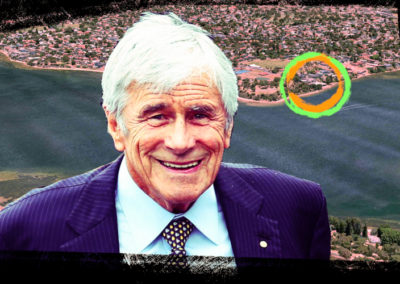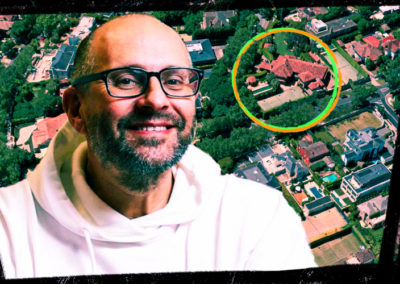Bill and Imelda Roche turned a small investment in American cosmetics business Nutrimedics into billion dollar property empire, Roche Group. They are linked to three Dark Companies which enjoy “grandfathering” exemptions.
| Top 200 Rich List (2020) | No. of Dark Companies: 3 | Political Donations since FY 1998-99 |
|---|---|---|
| Rank: 84 | Roche Group Pty Limited | Labor Party: $39,000 |
| Wealth: $1.21b | Miledo Pty Ltd | Coalition: $86,399 |
| Wealth (2019): $1.42b | N.E.Q Pty Limited | Independent: $0 |
| YoY wealth change: -14.8% | Total: $125,399 |
In 1968 Bill and Imelda Roche invested in Nutrimetics, an American cosmetics line after seeing an ad for the business in a newspaper. The couple paid $6,000 for their initial stock and would go on to build an empire across 16 countries with over 100,000 sales consultants in Australia alone by the 1990s. In 1995, Imelda Roche AO was awarded the Order of Australia for her contribution to “business and commerce, to women’s affairs, and to the community”.
The pair sold their highly successful Nutrimetics business to Sara Lee Corporation in 1997, moving into property investment with Roche Group Pty Ltd. Bill and Imelda have taken a step back from the family business with their two sons Dominic and Damian Roche taking over the operations of Roche Group.
Upon his retirement, Bill Roche began the development of the Hunter Valley Gardens. Opened in 2003, the gardens consist of 14 hectares of 10 individually themed gardens. Located 3 km away from the Hunter Valley Gardens is the Roche Estate winery, which has hosted the likes of Elton John, Rod Stewart, and Neil Diamond.
In April 2019, the Roche family sold a residential site in Double Bay for $55 million. Two months later they purchased a $21 million waterfront property in Palm beach which features a 2075 square metre beachfront.
Roche Group came under fire last year after the final stages of their Appletree Grove Development threatened the area surrounding a sacred Indigenous site. The Butterfly Cave, located in Lake Macquarie, New South Wales, is believed to be 4000-6000 years old and has been used as a meeting place for Awabakal women for generations.
Both State and Federal Governments recognise the cave as a culturally significant site through legislation. However, Roche Group appears to be proceeding with the final stages of their development, which would come as close as 20 metres to the cave, potentially causing harm to the site and disrupting the Awabakal women’s spiritual activities. A petition urging Environment Minister Sussan Ley to intervene has received almost 170,000 signatures.
Staff writers who have worked on one or more of our special investigative projects include Zacharias Zsumer (War Powers), Stephanie Tran, Tasha May and Luke Stacey.


































